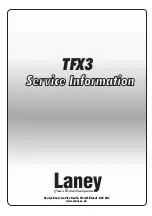
27
27
27
27
Cascading the R1
It is possible to place up to 16 R1 multi-room amplifiers in cascade.
To cascade R1’s, you need to give each R1 a cascade address, this is done by setting the dipswitch
at the rear panel. Make sure there is always one R1 configured as master and each address can be
used only one time. The Data Uplink of the master needs to be connected to the Data Downlink
of the first slave. The Data Uplink of the first slave needs to be connected to the Data Downlink
of the second slave… and so on. Further more, each R1 needs to be connected to the same local
network using the Ethernet remote control port. This also means that each R1 needs to have its
unique IP-address in the local Ethernet network. To give each R1 an unique IP-address,
DHCP-
mode will be enabled automatically when the cascade address of the R1 is within the slave
range !!
One of the advantages of cascading R1’s is that you will have an easy to use web interface to
control all of the cascaded R1’s. When you want to change the settings of one of the cascaded
R1’s, you only have to
surf to the website of the ‘master’ R1
. The web page you see now is
extended with tabs on the bottom. You only have to click on the correct tab, wait until the R1’s
settings are uploaded to the website and you will be able to change the settings of the desired R1.
* * * *
TO DO: Picture tabbed webpage
* * * *
Another advantage is that you can use more then 8 wall mounted control panels to control only
one zone. The number of wall mounted control panels to control one zone is limited to 32.
Chapter
7








































